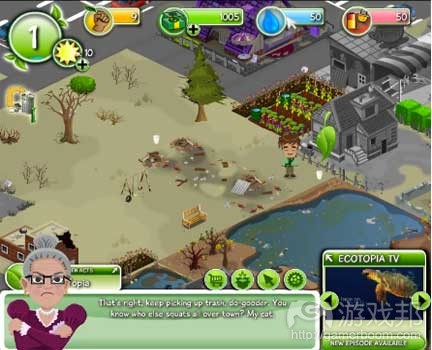关于设计社交游戏首次用户体验的5大建议
作者:Mitch Zamara
过去的2年时间里我一直在玩各种社交游戏,包括各大平台上的大型游戏和许多小游戏等。在这个过程中,我发现许多游戏都很擅长借鉴他人的机制、病毒传播方式、游戏理念、系统等内容,但在首次用户体验(游戏邦注:First Time User Experiences,简称FTUE)上却并不十分成功。。我认为,首次用户体验是游戏中不可或缺的重要部分。除了加载的屏幕,首次用户体验可以说是玩家唯一能看到的东西了。如果有越来越多的玩家开始进行游戏的第二个环节或第三个环节等等,这就表示你的游戏应用是受欢迎的,而这些被游戏所吸引的玩家还会邀请并介绍其他朋友共同参与。以下我将提到5个建议,以帮助那些社交游戏开发者创造出更加成功的首次用户体验。
设计,并反复测试用户体验,而且越早越好!
当开发出了一款游戏后,开发者必须着手准备的第二件事是设计并测试该游戏的首次用户体验。这种测试不能只做了一次就没有后续。游戏开发者可以让开发团队中的成员加入这个测试,让他们玩游戏并提交游戏评价或反馈。筛选出批评意见的反馈,并根据这些意见不断完善游戏的新手教程,并再次做测试。直到这款游戏正式发行之前,开发者应该反复进行这种测试。而且,在发行了这款游戏后他们还应该继续保持优化首次用户体验。
限制新手教程环节的长度
在游戏初始阶段引导玩家进行游戏很重要,但是限制这个新手教程的引导也是很重要的。一款好的游戏必须教会玩家如何使用游戏技巧进行游戏,但是也不能一直限制玩家,按照它所提供的教程游戏。一款好的游戏只会在游戏中的几个环节使用新手教程,并在适当的环节快速脱离这个引导,而让已经上手的玩家能够按照自己的想法进行游戏。而且游戏开发者必须确保在出现新的游戏机制和系统前,玩家就已经完成了一些基本任务和目标,即已经能够独立进行接下去的游戏环节了。
不宜过早暴露太多功能
在过去几年里,游戏产业发展迅速,自从《Parking Wars》和《Mouse Hunt》等几款早期的游戏发行以来,每一款游戏的功能,系统和机制都明显增加了。新的游戏拥有更复杂的经济系统,角色定制和其他各种各样的新功能。这些功能虽然看似简单,但是有些却着实难倒了很多玩家。如果你的游戏中包含了多种不同的功能,那么你最好在游戏初期只公开第二个功能,并通过新手教程引导玩家使用初级功能。当玩家掌握了这个功能后再引导他们使用第二个功能。游戏开发者应该着重关注那些用户感兴趣的功能,而先不公开那些较为次要的功能。换句话说,如果一款游戏的每种功能同时暴露在玩家面前,他们将不可能很好地吸收和消化这些功能,也就意味着他们将无法更好地继续体验游戏。
利用更多的病毒传播机制
这一建议不仅能够帮助游戏开发者留住那些下载了应用的玩家,还能够通过这些玩家吸引到更多新用户。所以游戏开发者必须牢牢抓住这种机遇。举个例子来说, 假如《CityVille》玩家在游戏的前三个阶段就已经收到9次提醒,希望他能邀请朋友加入游戏,赠送礼物给朋友或在自己的涂鸦墙上晒出游戏信息等。这种提醒对于玩家来说其实是个很不错的机会,他们不仅能够扩展朋友圈,同时也能够与朋友分享一些信息。而且很少会有玩家因此产生一种强迫感。游戏开发者还应该注意,这种方法必须使玩家感受到这种邀请的真实性,不要让其感到任何压力,甚至不要让其限制与朋友的互动交流。
测量并追踪结果
毫无疑问,这点建议很重要,但是除非你有足够且准确的数据做证明,否则你所得到的首次用户体验数据经常是不可靠的。游戏开发者应该仔细测量安装机制,并识别游戏初期的每个步骤或任务中玩家的数量。如果开发者能在游戏的每一个环节中建立一个明确的点击引导机制,将能帮助他们更好地判断哪个阶段会对阻碍新玩家体验游戏,并快速针对这个阶段作出有效的调整。如果开发者能积极追踪游戏的起始任务阶段和结束阶段,并着重调整,修改与推动首次用户体验发生转变(游戏邦注:即引导新玩家转变成忠实玩家),那么他们将能挽留住更多的玩家,并更好地完善自己的游戏应用。(本文为游戏邦/gamerboom.com编译,如需转载请联系:游戏邦)
Designing First Time User Experiences for Social Games
by Mitch Zamara
After spending the last 2 years working in social games, I’ve had a chance to play through a very large number of social games, from the biggest games on the platform, to many smaller ones. One thing that I’ve noticed across a large number of these games, is their ability to borrow mechanics, viral flows, concepts, systems, and a large number of other things. However, the one thing that I rarely see properly emulated is the first time user experience (FTUE). The FTUE is arguably (in my opinion) the most important part of the game that you will build. It’s the only thing, aside from your loading screen that all installed players will see. The number of players who make it to session 2, session 3 etc..will determine the ability for your app to “hold water”, as those players remain, and brings their friends to the application. I wanted to share 5 observations/tips/lessons that will hopefully help fellow social game developers in creating successful FTUE’s.
Design, Test, and Iterate; Early, and Often!
The second you have your core loop implemented in your game, you should start designing and testing your first time user experience. This will not be something you just do once and are done. (And if you do, you’re doing it wrong!) Play through it, have everyone on your team play through it, and have everyone submit notes and feedback. Isolate the good feedback, update your tutorial, and test again! Keep doing this until the very day you launch. Hell, after you’ve launched you should keep tweaking and optimizing your FTUE.
Limit the Number of Steps
While it’s important to guide your players through the first steps of your game, teaching them the very basics, it’s also important to limit the length of your guided tutorial. Empower your players to use the mechanics and methods you teach them, and never pull control from them for too long. Look at the successful games on the platform that have a guided tutorial, and look at how many steps they have. The best games are able to capture the core loop in a handful of steps, and transition out of ‘tutorial mode’ quickly. The player should have enough knowledge by now to complete basic tasks and objectives (like quests) until you start to unfold the subsequent mechanics and systems of your game.
Don’t Expose Too Many Features
As the space has evolved over the last couple of years, the number of features, systems, and mechanics included in each game has risen significantly since the early days of games like Parking Wars, and Mouse Hunt. New games have complex economic systems, character customization, and a wide range of other features that seem simple, but together can easily overwhelm an average player. That’s why you should limit what features are exposed to players. If you have multiple resource types, then front load the player with the secondary resources, and teach them how to make the primary resource. Once they get that down, then introduce them how to earn the secondary resources. Focus on the features that are the most eye catching, enjoyable, and fun to do, and delay the rest of the supporting features until later sessions. Players wont feel overwhelmed, and they’ll be more likely to pick up the complexity of your game if they are served it in small digestible bites.
Present Enough Viral Opportunities
This topic extends the prior point about your app needing to ‘hold water’. In addition to being able to retain your players who install your app, those same players need to also become your means to reach new players! The way to achieve this is by presenting enough viral opportunities. A great example of this, is looking at the FTUE deconstruction of CityVille done by Kevin Rose. In the first 3 levels of the game (less than the first session lasts) the player is asked to invite friends, send gifts, and post to their wall a total of 9 times! It’s extremely important to note that while this may seem like a lot of opportunities to ‘spam your friends’.. almost all of these scenarios feel like natural opportunities to share information with your friends. Rarely do any of them feel ‘Forced’ upon the player in any way. It’s critical that if you do implement these viral opportunities that you make them feel genuine, and inviting for the player, or they’ll feel pressured and never want to share their experience with friends.
Measure and Track Your Results
It should really go without saying, but unless you have hard numbers to back it up, your instincts on how successful your FTUE really is, are likely wrong. Measuring your install funnel and identifying what % of players make it through each step/quest in your first session is extremely critical. If you have hooks established for every single guided click action, you can quickly determine where your sticking points are for your new players, and how effective you are when making adjustments. If you’re tracking all your quest start and quest completion points, you’ll also be able to tell what quests players are getting stuck on. If you’re tracking each quest task, you’ll know what tasks are too hard/complicated etc.. Put significant efforts towards tuning, modifying, and maximizing your FTUE conversion (players who become regular players) and you will stand the best chance at retaining players and growing your application.(source:altdevblogaday)








































 闽公网安备35020302001549号
闽公网安备35020302001549号